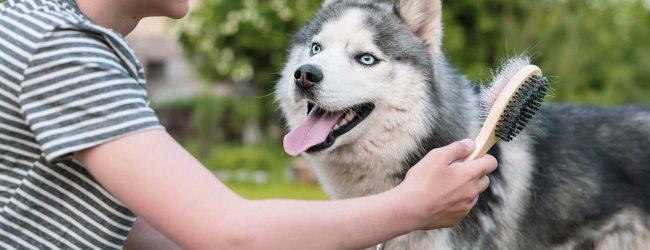Running With Dogs? Tips To Keep It Safe & Sporty
Discover the best practices for running with dogs - and how best to keep them safe if they decide to run off on a whim.
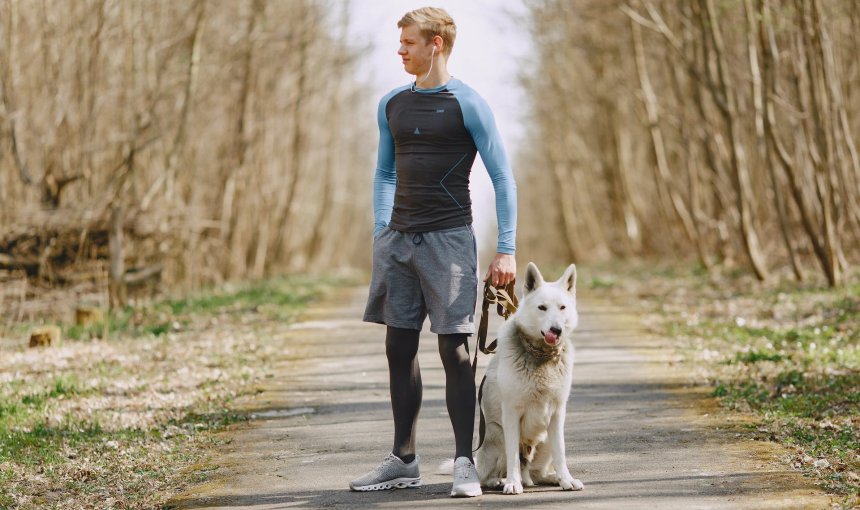
Running with your dog is a great way to get in shape, and get your dog their daily dose of physical activity. So before you head out, here are a couple of tips to guarantee a fun fitness adventure – that also keeps your buddy safe. Like following their every step in real-time with a GPS tracker in case they bolt off while on a run.
Key Takeaways
🏃♀️ Running keeps both you and your dog fit, strengthens your bond, and keeps them mentally active too.
🐶 Make sure your dog is healthy enough for running. Consult a vet, gradually build stamina, and choose dog-friendly running gear.
🌥️ Safety first. Run during cooler hours, avoid hot pavement, bring water, and watch for signs of fatigue, overheating, or injury.
🤝 Teach your dog basic commands and leash manners. This helps keep your runs smooth, safe, and enjoyable for both of you.
🌎 Use a smart dog tracker (like Tractive) to track them down in case they run off by themselves – and also monitor their activity and vital signs.

Always know your buddy is healthy & safe
Read more- Key Takeaways
- Is your dog fit for running?
- Is my dog likely to enjoy running? What to consider
- Master loose-leash walking first …
- … and then basic commands
- Speed things up with a cue
- Train for endurance.
- Get your dog running gear
- Pay attention to your dog.
- Consider the weather.
- Choose a dog (paw) friendly running route.
- Always clean up after your dog .
- Plan ahead for your dog running off
Is your dog fit for running?
Not so fast! Before you start running with your dog, you need to find out if your dog’s size, health, and breed make them actually suitable for running. Certain dogs won’t be able to run at all, whereas other dog breeds are born for running. Check out our guide to the best running dogs for more information on what makes a dog suited to running or not. And of course, consult your vet if you are unsure about your dog’s physical abilities before starting any new exercise routine with your dog.

Is my dog likely to enjoy running? What to consider
- If they’re young
Puppies might seem like little balls of endless energy – but even they have their limits. They might also be too excitable to take for long runs. (Since they’re more likely to get distracted, run off, and get lost.) So wait until your dog is fully grown before you go running with them. Running can be dangerous for puppies, whose bones are still growing,2 Or if they pick up an infectious disease (like distemper) before they’ve gotten their vaccinations. - If they’re on the older side
Senior dogs might be vulnerable to mobility-affecting health conditions like arthritis. So for them, even long walks might feel uncomfortable. Besides, with their risk of developing conditions like dementia, a senior dog might even wander away while out on a run. (And not be able to find their way back home because they’re disoriented.) - If they’re a brachycephalic breed
Dogs with short muzzles like Pugs or Bulldogs are not well suited to running long distances. (As they’re more prone to breathing difficulties.) - Your dog’s personality, temperament, and physical health
Make sure to get a green light from your vet before starting any new routine.
💡A dog GPS tracker can be a potential lifesaver while out running with dogs. If they outrun you and disappear, you can track their movements in real-time – with just a glance at your phone.
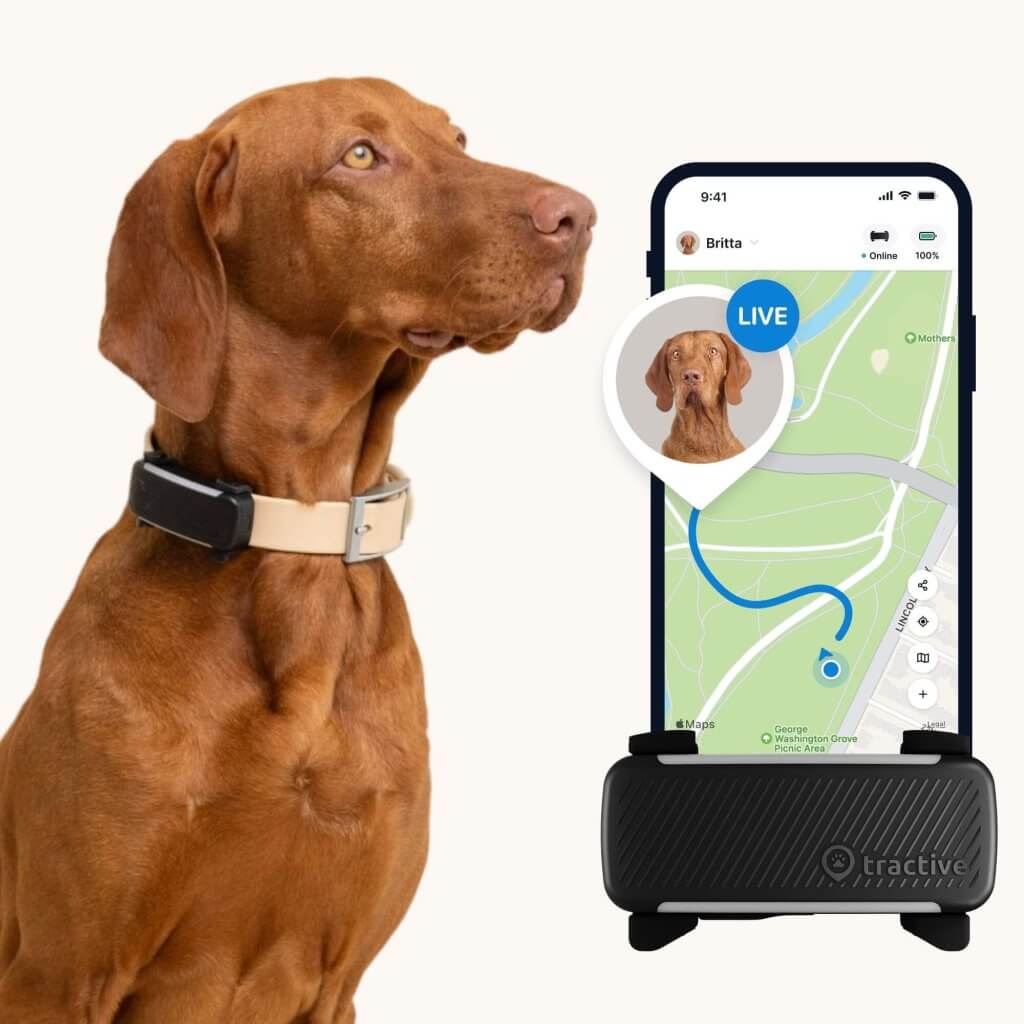
Follow your dog anywhere
Get real-time location information, wherever they go. And find out when they try to make an escape, or just when they go somewhere they shouldn’t, with Virtual Fences.
Master loose-leash walking first…
Safety first. As any dog parent knows, training is an essential part of raising and caring for a beloved furry friend. So before your dog can safely run with you, they’ll need to have mastered walking on the leash first. Because it can be dangerous when your dog pulls on the leash. (And even more so when you’re both running at full speed!)
Later, when you’re actually running with dogs, you’ll need to make sure that your canine companion is trained to run beside you – not in front of you, or all over the place. Otherwise, you could get hurt by tripping on or getting tangled in the leash.
⚠️ Walking your dog on a leash might even be a legal requirement in different countries around the world (and some US states.) Make sure to check your local laws before heading out for a run with your dog.
Read more: The guide to leash training a puppy or dog
…and then basic commands
If your dog misbehaves on walks, then they probably aren’t ready to run. Teach your dog some basic obedience commands that you can use when you run.
- “Leave it” is a helpful command, as your dog will learn to ignore tempting items on the route (like leftovers).
- Teaching your dog to “Sit” and “Stay” is also very important, especially at traffic crossing.
- “Stop” is another important command – especially if your dog has more energy than you!
- “Turn left/right” can also help your dog adapt to your pace, especially if you’re both on a winding trail
- “Come back”, or your dog’s recall. A potential lifesaver if your dog decides to go off wandering while out running.
Speed things up with a cue
Once your dog is walking on the line like a good boy or girl, you can slowly start to increase the pace you’re going together. Here it can be helpful to use a cue, to let your dog know you’re picking up the pace. For example, if you say, “Come on, let’s go” to tell your dog it’s time for a walk, you might try a different cue such as “Run, buddy!” to signal it’s time to run.
💡 Make sure to teach another cue to help your dog learn when it’s time to slow down. (“Okay buddy, let’s slow down” – or similar.) Use the same phrases consistently for best results.
Train for endurance.
If you’ve mastered the previous steps, now it’s time to start building endurance in your dog. As runners, we need to build strength and endurance over time; your furry friend is no different. Too much too soon increases your dog’s risk of injury, just as it does for you. Start out by incorporating small stints of running into your daily walks with your dog. Slowly, gradually, increase the time spent running on each succeeding walk. Your canine fitness companion will be in shape in no time.
Get your dog running gear
The perfect dog jog or run is not complete without the right equipment – for you and your furry friend. In addition to your personal running gear, here are somethings to take with you for your furry friend:
- Collar or harness. Make sure your dog is wearing their collar or harness – so you can attach their ID tags, leash, and tracker/activity monitor to it. If your dog is allowed to pull while running, you’re better off with a harness. These tend to be more comfortable for your dog if they occasionally pull or you have to stop all of a sudden.
- Make sure your dog’s ID collar tags include your contact details. Ideally, you’ve also gotten your dog microchipped.
- Dog running leash. Use a hands-free dog running leash to ensure your dog stays by your side and out of harm’s way.
- Running belt or backpack. To keep your poo-bags, cell phone, keys, and water.
- Paw ointment. To protect your dog’s feet from the elements.
- A dog jacket, in case of very cold weather.
- Collapsible water bowl. So your dog never has to go thirsty.
“When I’m out running with my dogs, I use a running belt, a leash with a shock-absorber, and a pulling harness..
We’ve tested several harnesses on the dogs and made them run and pull to find the right ones that fit perfectly, don’t interfere with their movement, and are comfortable for them.”
– Marina Selinger, UX Designer at Tractive & dog mom of 4
Pay attention to your dog.
As you’re running you’ll need to consider not only your own needs and condition, but that of your dog(s) too! So pay attention to your dog’s behavior and act accordingly.
- While running, your dog might get thirsty, need a potty break, get tired, injured, or sore.
- Taking short water breaks throughout your run will give you an opportunity to check in with your dog and make sure they’re still doing okay.
- And of course, stop if your dog shows any signs of distress or illness.
Consider the weather.
Dogs have fewer sweat glands than us and can’t shake off the heat like we do. Try to jog early in the morning or late in the evening, when the temperatures drop and the sun isn’t at its highest point. The best advice is to test your dog’s jogging endurance during different temperatures. Your pup can’t tell you when he’s thirsty, so make a few water-breaks during the run until you have an idea of how much water your he needs.
Be especially generous with water in the warm months, because dogs overheat more easily than humans – because of all that fur and the fact that they don’t sweat. In cold weather, you may need to consider using a dog jacket or dog shoes.
Choose a dog (paw) friendly running route.
The great thing about running is that you can do it almost anywhere. But some places are better for your dog to run than others. Streets and sidewalks with hard surface can be tough on your dog’s body. Grass is softer and can be much easier on a dog’s joints than pavement (but beware of uneven surfaces and holes).
- If you’re running in the heat of summer, keep in mind that the pavement gets warm in the sun and can harm your pet’s paws. If the ground is too hot for you to touch comfortably with the palm of your hand, then it’s too hot for your dog to run on.
- Also, if you are running in winter, through snow and ice, avoid streets with salt and chemicals. These can be very toxic to dogs.
- Hiking with dogs and feel like a run? Make sure you’ve picked a dog-friendly trail.
Always clean up after your dog.
Be nice to your fellow runners and clean up after your dog! There is nothing worse than stepping in a mess that you have to clean off after your run.
Poop bags may not fit your running equipment. But bring a bag or two and pick up your pet’s mess – it really is the courteous thing to do! Keeping the environment clean really makes running more enjoyable for everyone.
Plan ahead for your dog running off
Even the most well-trained dogs can fall prey to their instincts. Whether it’s to chase down a woodland animal, sniffing out a female in heat, spooking from fireworks nearby, or even boredom. (Sometimes too far to hear you calling out for them.) In times like these, a dog GPS tracker can help you track their every move in real-time – no matter how far they’ve run off to.
Just hit “LIVE” on your Tractive mobile app – and follow your dog’s every move, as they make their every move.
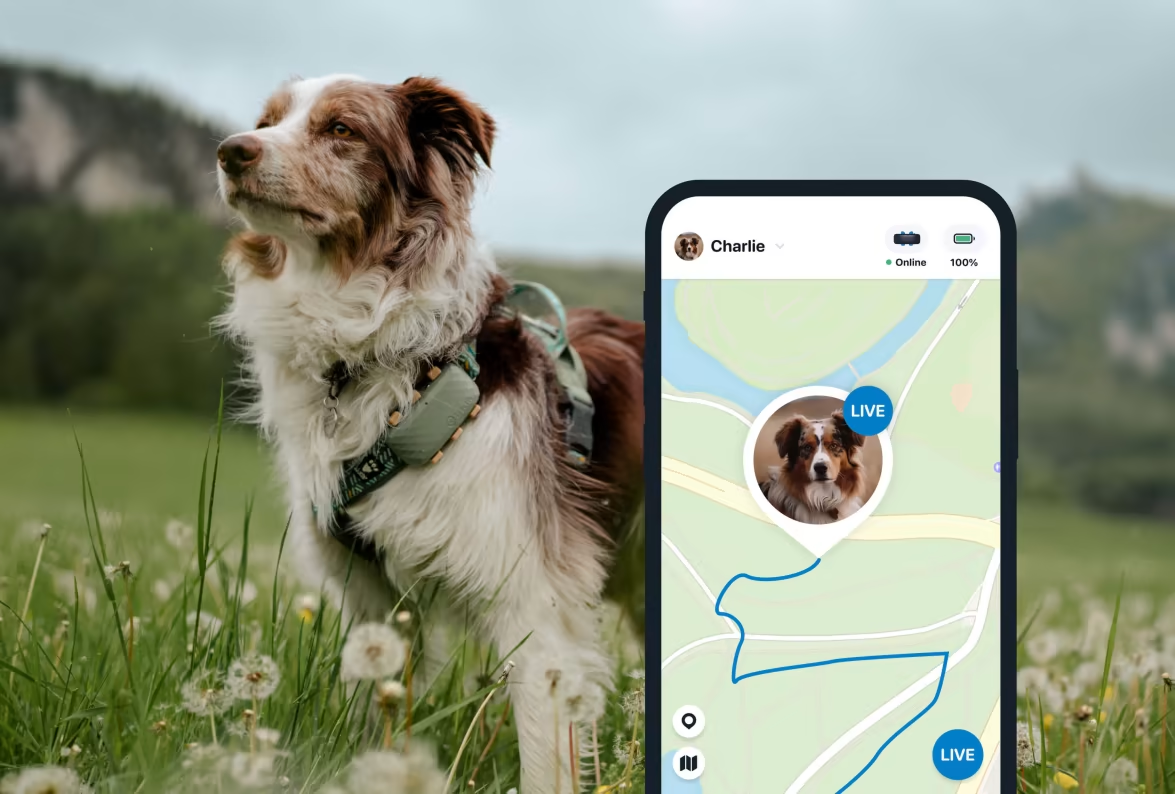
Even better, your tracker comes equipped with Health Monitoring features, including how many calories your dog has burned and the distance they’ve covered. You can also monitor their activity, plus their vital signs – like their breathing and heart rate.
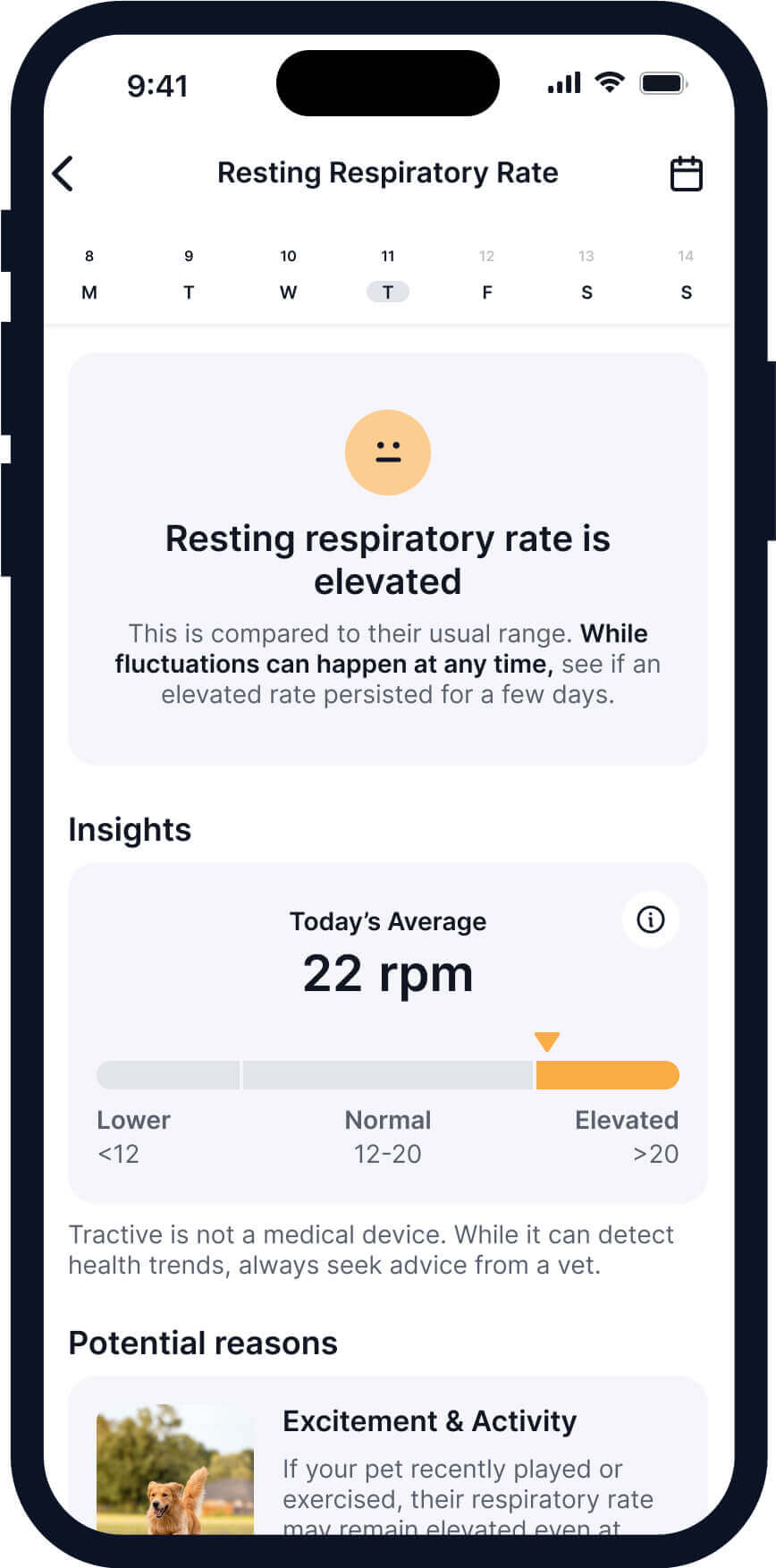
So you can pick up quicker on a change in your dog’s respiratory rate or heart rate – which could be a potential lifesaver, especially on hot days.

This post was written by Marina Selinger, a licensed dog trainer and international agility competitor. She’s also mom to 3 high-energy Shelties and a Japanese Spitz. In her free time, you can find her walking her dogs, hiking, or in the middle of a high-speed training session.


